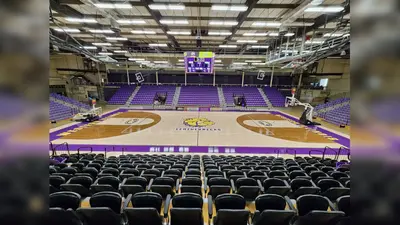McDonough District Hospital issued the following announcement on June 29.
While the healthcare industry has changed immensely over the past 60 years, MDH has remained constant in its commitment to providing healthcare in an atmosphere of healing, compassion, and caring.
The origins of McDonough District Hospital began in 1954, when a community poll by mail was held to determine the public interest of either spending $264,000 for a revision of St. Francis Hospital, or spending $1,000,000 to build a new hospital. At the time of the poll, the Macomb community was served by three hospitals: Marietta Phelps Hospital, Holmes Hospital, and St. Francis Hospital. Opened in 1903, the St. Francis Hospital was operated by the Sisters of St. Francis and had grown from the original 25 beds to 100 beds.
Upon completion of the postal poll, area residents voiced their overwhelming support for a new community hospital and a subsequent referendum authorizing the establishment of MDH.
One newspaper article covering the poll wrote, “The hospital proposal swept every precinct in the county by decisive margins. Sciota, IL rolled up an amazing vote of 154 to 3.”
In the McDonough County Courthouse on June 16, 1955, Judge E.D. Grigsby administered the oath of office to the nine people he had selected to become directors of the proposed hospital district: Bessie Myers, Reverend Courtley Burroughs, Francis Hocker, T. Otis Brown, George Bucher, Wanda Hammond, Ralph Dean, J. Hughey Martin and James McDaniel.
A 10-acre site was purchased for $20,000 from Mrs. Blanche Sears on the southeast edge of Macomb. Financing of the project was provided by a Federal Government Grant under the Hill-Burton program for $506,000 and by the issuance of $1,680,000 in general obligation bonds. The hospital's first administrator, Earl G. Dresser, assumed his duties in June of 1956.
After a full year of planning and preliminary activities, groundbreaking ceremonies for the proposed facility were held on June 30, 1956. Along with community support, opening preparations were largely assisted by the Auxiliary to MDH. Officially incorporated on December 13, 1957, charter members helped make beds, gave tours, and did whatever was needed for the opening of the hospital.
On June 30, 1958, exactly two years from its ground breaking ceremony, McDonough District Hospital opened its doors. At the time of its opening, the hospital had 104 beds, 16 in obstetrics, 8 in pediatrics, and 80 in the medical and surgical units (47 double and 10 private rooms) in the 72,000 square foot facility.
The hospital opened with 20 doctors on staff, now 60 years later more than 35 doctors currently have MDH privileges along with an additional 19 advanced practitioners. A total of 626 people were employed at McDonough District Hospital during Fiscal Year 2017.
MDH Through the Years
Already tending to the needs of the community, in 1960 the board agreed to open a 26-room clinic housing three physicians and one dentist. In 1964, the Physical Therapy department opened and the following year, five acres were purchased directly south of the hospital to begin additions on the second and third floors to house renovated Obstetrics, Radiology, Pharmacy, and Outpatient Services departments.
These renovations culminated in 1967, increasing the patient capacity to 151. Two years later, additional second floor renovations were made, which increased the patient capacity to 187. Mammography screening was originally introduced at MDH in 1968, one of the first hospitals in the area to offer mammograms.
The year 1973 brought additions to Radiology and Laboratory, including separate changing areas for men and women, a private holding area for patients, direct and private access to the Emergency Room, and larger, more convenient bathrooms for handicapped accessibility. MDH also became a designated trauma center that year with full time physician coverage, ambulance services and air transfers available.
In 1976, Health Services Building I was constructed when the Macomb Clinic had outgrown its space. The construction of the building enabled MDH to rent space to physicians on campus and provided room for new staff.
In 1980, the Emergency Room was expanded, allowing MDH to expand and relocate Medical Records, Human Resources, the Medical Staff Library, and the Lounge. In addition, this expansion included a new ambulance garage.
The following year, a Laboratory modernization project included the relocation of the MDH Blood Bank and improved ventilation within the Laboratory.
In 1984, MDH Home Health Care was introduced, bringing expert care directly into the homes of McDonough County residents.
A large-scale modernization project took place in 1985, when new Surgery, ICU, and Cardiopulmonary departments were constructed.
In 1988, the Obstetrics department modernized by doing away with the traditional delivery areas and replacing them with three Labor-Delivery-Recovery (LDR) rooms, which allowed new moms to have more comfortable and efficient birthing experiences.
The following year, MDH renovated Health Services Building I and opened the Women’s Health Resource Center, and the Senior Health Insurance Program was implemented to assist seniors with questions about Medicare or other health insurance. This same year, MDH became a smoke-free facility.
The construction of Health Services Building II was completed in 1993, when a need arose to house newly recruited physicians.
In 1994, a large renovation process took place, which affected Admitting and Registration, Outpatient Surgery, Phase II Recovery and Surgical Prep, the Gift Shop, and Cashier/Credit Offices. At this time, a national shift in healthcare services allowed many inpatient services to be handled on an outpatient basis. Due to this change, MDH reconfigured its facility to accommodate the larger number of patients using outpatient services.
Three years later MDH began a multi-year project to modernize the major diagnostic and rehabilitation programs, prompted by technological advancements and the continued growth in outpatient demand.
The vacated radiology space was then renovated to permit Cardiology, Blood Bank, and Advocacy Services to grow. The vacated Cardiopulmonary space in the hospital’s basement was renovated for the growth of Sports Medicine and Rehabilitation Services. The cafeteria was also renovated at that time to provide additional dining space and a more efficient layout.
In 1998, MDH opened an additional facility for Outpatient Rehabilitation Services, located on N. Lafayette Street to more efficiently meet the needs of outpatients undergoing physical or occupational therapy.
In 2000, the construction of the Westervelt Home was made possible by a gift from the estate of Larry T. Westervelt. The home provides family and friends of MDH patients a place to stay in a home-like setting close to the hospital.
The launch of McDonough Medical Group (MMG) took place in 2011. Established as a division of MDH, this development brought new service lines in primary care and specialty clinic services. Currently, MMG provides 30 physicians and advanced practitioners covering 16 different services and specialties to meet patient needs, including MDH Convenient Care at the Macomb Hy-Vee, providing medical care and treatment for uncomplicated minor illnesses, injury and other support for patients greater than 18 months old.
As evidenced by this notable timeline of renovations and additions, MDH has striven to continually offer and expand high quality services for people at all stages of life. Today, MDH provides an impressive spectrum of advanced medical treatments, personalized health services and partners with industry leaders to maintain services such as:
•Advocacy
•AirEvac Lifeteam
•Anticoagulation
•Behavioral Health
•Cancer Care
•Cardiopulmonary
•Convenient Care
•Diabetes Education Center
•Emergency Services
•Food and Nutrition Services
•Home Health Care
•Hospice
•Hospital to Home (H2H) Swing Bed Program
•Laboratory
•Lifeguard Ambulance
•McDonough Medical Group (Housing clinics in the following services: Ear, Nose and Throat; Family Medicine; General Surgery; Internal Medicine; OB/GYN; Orthopedics; Pediatrics; Podiatry and Psychiatry)
•Nuclear Medicine
•Obstetrics
•Outreach Services
•Pain Management Center
•Radiology
•Senior Behavioral Health
•Sports Medicine & Rehabilitation
•Surgical Services
•TeleHealth
•Wound Ostomy Clinic
Most recently, MDH broke ground for the highly anticipated Dolores Kator Switzer Women’s Center (DKSWC). This multimillion dollar project will feature seven obstetrics beds in six rooms, a nursery, three Labor-Delivery-Recovery rooms, renovations to the obstetric and imaging waiting rooms, and an Imaging center.
The Imaging center of the DKSWC expansion includes: diagnostic imaging, new waiting area, and expanding and remodeling the suites for 3-D digital mammography, stereotactic breast biopsy, ultrasound and bone density screenings. The project timeline is expected to be completed in January 2020.
Over the years, MDH has implemented many changes in order to bring the latest technology and the most proficient, knowledgeable medical experts to the community. Despite an ever-changing industry, the mission of McDonough District Hospital, in partnership with its Medical Staff, remains constant with the goal to provide health services with a personal approach to care that enhances the quality of life.
For more information on the 60th Anniversary and MDH history, stay up to date on MDH.org, and on social media via Facebook (McDonough District Hospital), Twitter (MDH_Hospital) and Instagram (MDH_Hospital).
Original source can be found here.






 Alerts Sign-up
Alerts Sign-up